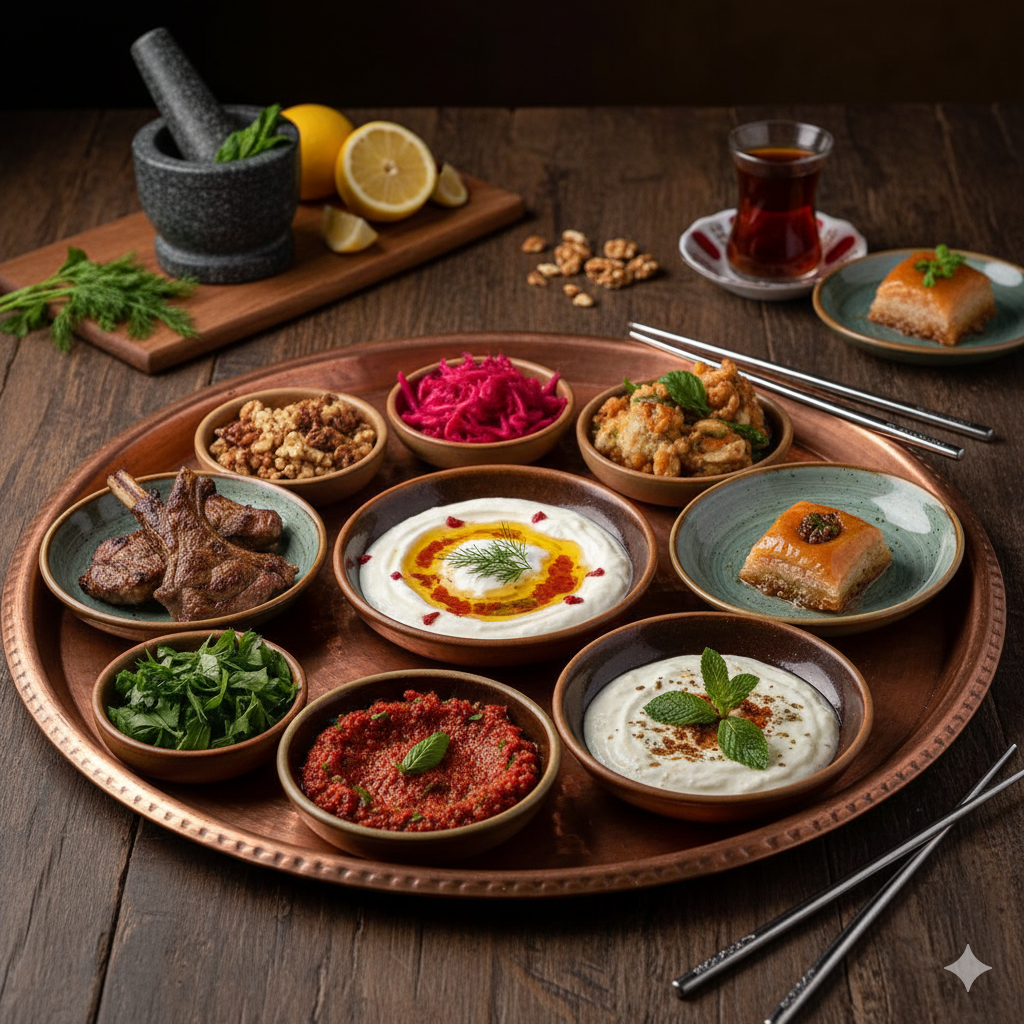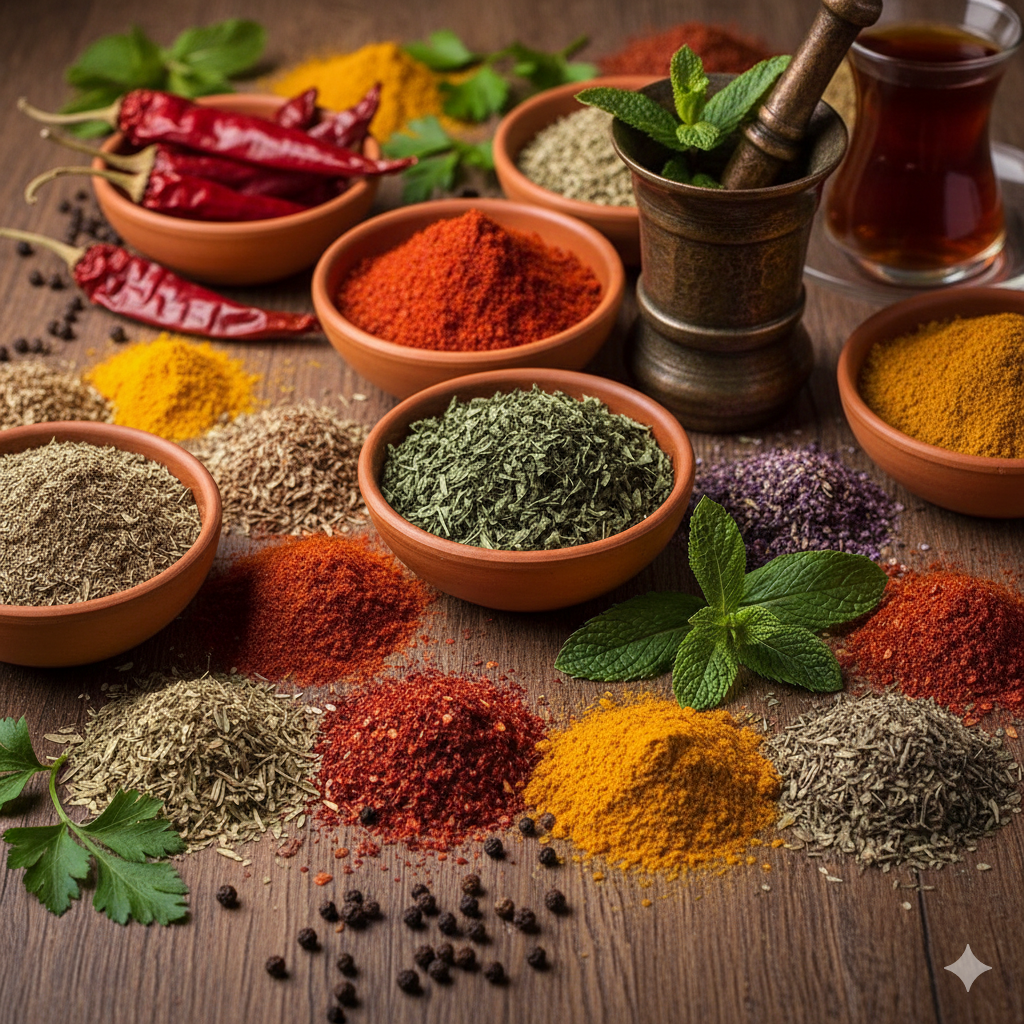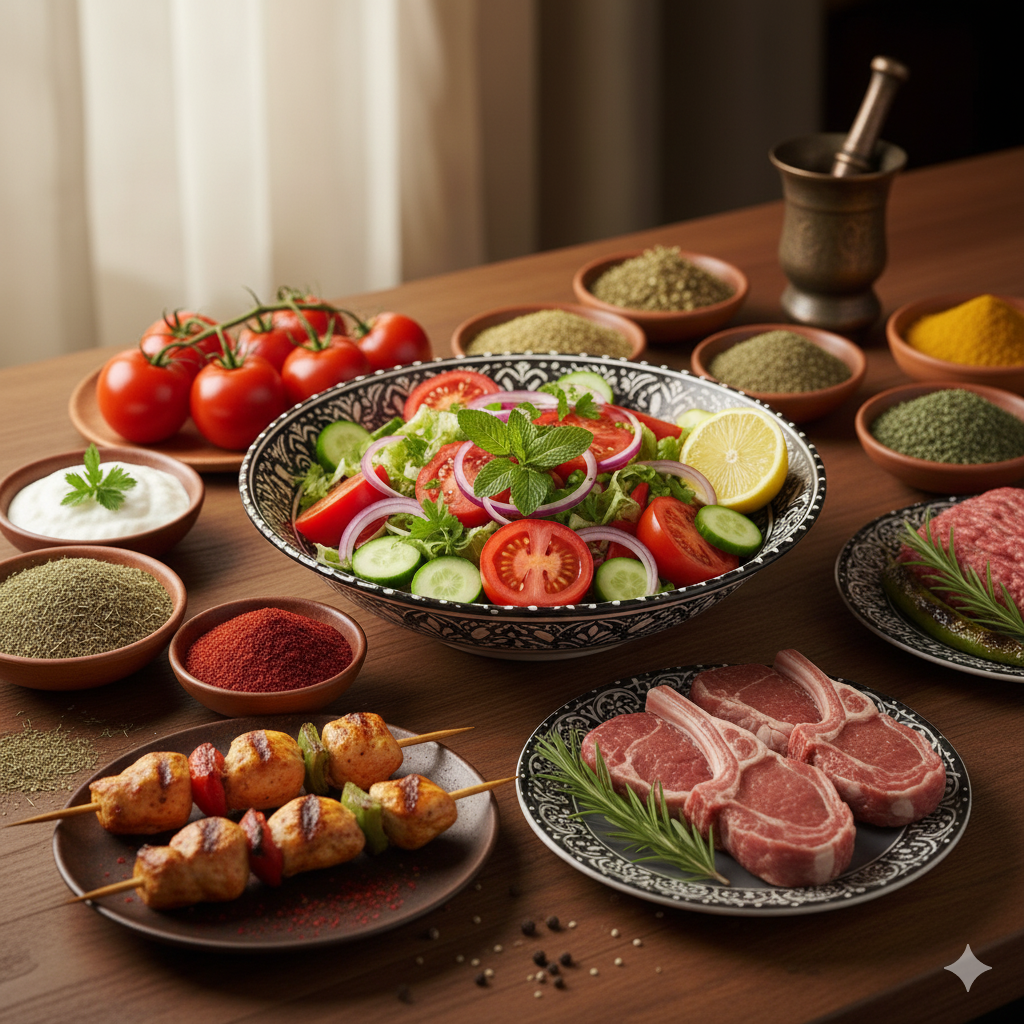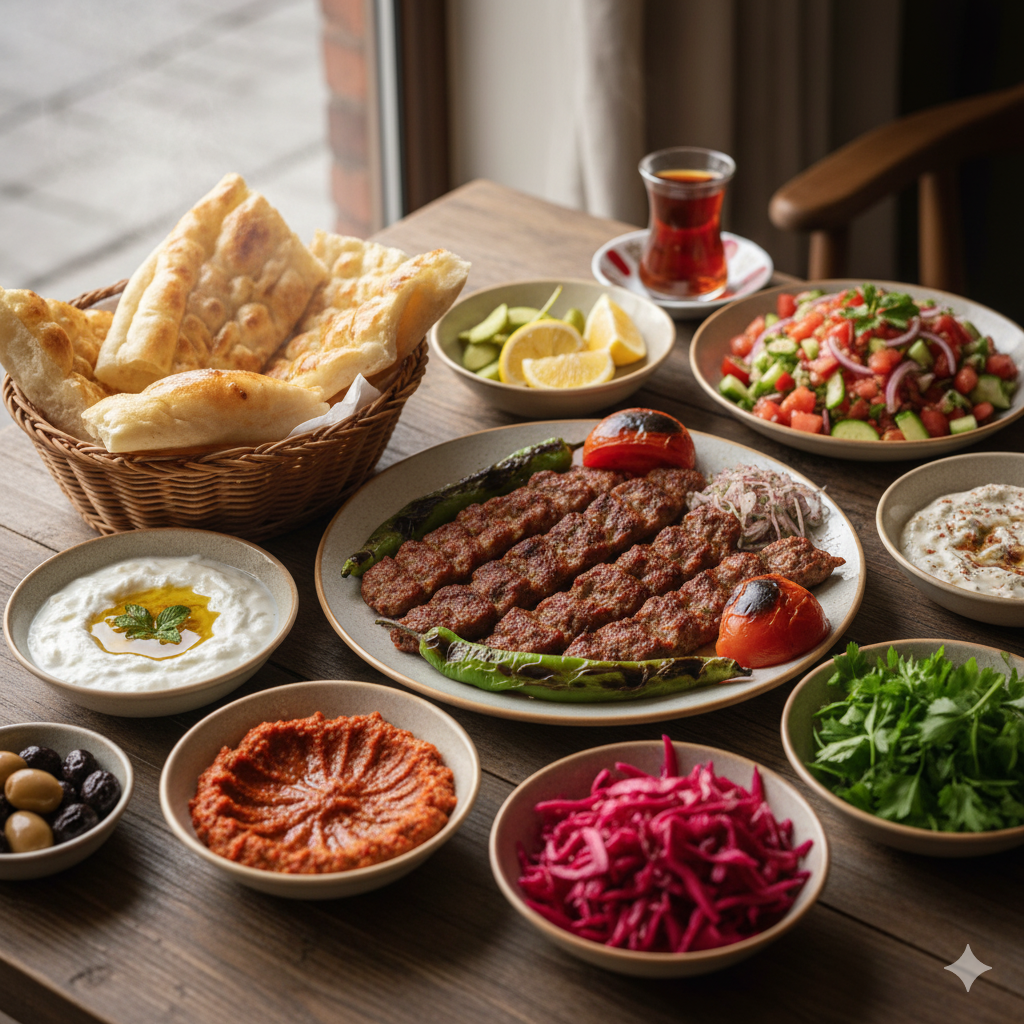How Turkish Cuisine Balances Spices and Flavors
Turkish cuisine is world-famous for its unique ability to combine flavors in a way that feels both comforting and exciting. Unlike heavily spiced Indian curries or very mild Mediterranean dishes, Turkish food finds a perfect middle ground. The use of spices is balanced, never overpowering, and always aimed at enhancing the natural taste of fresh ingredients. This balance is one of the key reasons why Turkish cuisine is loved by people all over the world.
In this article, we will explore how Turkish food achieves this balance—through its choice of spices, regional cooking traditions, and cultural philosophy of food.
1. The Philosophy of Balance in Turkish Cooking

At the heart of Turkish cuisine is the idea of harmony. Food should be flavorful, but not overwhelming. The spices are not used to hide the taste of meat, vegetables, or grains—instead, they complement and elevate them.
For example:
- A kebab may be seasoned with paprika, cumin, and black pepper, but the taste of the grilled meat remains the star.
- Yogurt is often added to balance spicy dishes, cooling the palate and creating harmony.
This balance makes Turkish dishes appealing to people with different taste preferences, whether they enjoy bold or mild flavors.
2. The Most Commonly Used Spices

Turkish cuisine uses a wide variety of spices, but in moderation. Some of the most important ones include:
- Cumin (Kimyon): Adds warmth and depth, commonly used in kebabs and stews.
- Paprika (Pul Biber): Both sweet and spicy varieties are used, adding color and flavor without extreme heat.
- Mint (Nane): Used fresh or dried, mint brings freshness to soups, salads, and yogurt dishes.
- Sumac: A tangy spice sprinkled over kebabs, salads, and onions to add a lemony kick.
- Cinnamon & Cloves: Used in desserts and some savory rice dishes, reflecting Ottoman influences.
These spices are never applied in excess—just enough to highlight the dish.
3. Regional Differences in Spice Use

Turkey’s geography creates diversity in food traditions, and spices play a major role in this.
- Southeastern Turkey (Gaziantep, Adana): Known for bold and spicy dishes. Chili flakes, garlic, and pepper pastes are widely used. Adana kebab, for example, is famously spicy.
- Aegean and Mediterranean Regions: Lighter cuisine with olive oil, herbs like oregano, thyme, and rosemary. The focus is on freshness rather than heat.
- Central Anatolia: Balanced flavors, hearty dishes like manti (Turkish dumplings) served with yogurt and paprika butter.
- Black Sea Region: Milder spices, more reliance on seafood, corn, and herbs.
These regional variations show how Turkish cuisine adapts to climate and culture while maintaining balance.
4. Pairing Spices with Fresh Ingredients

One of the secrets behind Turkish cuisine’s balance is the focus on fresh produce. Turkey’s fertile lands provide high-quality vegetables, fruits, and grains.
- Spices are used sparingly because fresh tomatoes, eggplants, peppers, and herbs already have strong natural flavors.
- Olive oil is another important ingredient—it carries spices gently, blending them into the dish without making them harsh.
- Fresh yogurt and lemon are often added to balance richer and spicier flavors.
For example, Iskender kebab uses grilled meat with spicy tomato sauce, but yogurt balances the heat, creating harmony in every bite.
5. Influence of Ottoman Culinary Traditions

The Ottoman Empire played a major role in shaping Turkish cuisine’s approach to spices. In the royal kitchens, chefs had access to exotic spices from Asia and the Middle East, but they used them with elegance and restraint.
- Dishes like pilaf with cinnamon and almonds show how sweet and savory were balanced.
- Desserts like baklava combine pistachios, honey, and a hint of spice without being overwhelming.
This refined use of spices has carried into modern Turkish cooking.
6. The Role of Accompaniments

Another way Turkish cuisine balances flavors is through side dishes and accompaniments:
- Ayran (yogurt drink): Refreshes the palate with salty and cooling flavors, perfect with spicy kebabs.
- Pickles (Turşu): Add a tangy crunch to balance rich and oily foods.
- Fresh Salads: Herbs, lemon juice, and olive oil lighten heavier meals.
These accompaniments ensure that even a spicy dish doesn’t feel too heavy or overpowering.
Conclusion
The beauty of Turkish cuisine lies in its balance. Spices are not used to dominate, but to complement. Whether it’s the fiery taste of Adana kebab, the freshness of mint in a yogurt sauce, or the sweetness of cinnamon in a dessert, every flavor has a purpose.
By respecting the natural taste of fresh ingredients and pairing them with carefully chosen spices, Turkish cuisine creates harmony on the plate. It is this delicate balance of spices and flavors that makes Turkish food one of the most beloved cuisines in the world.

